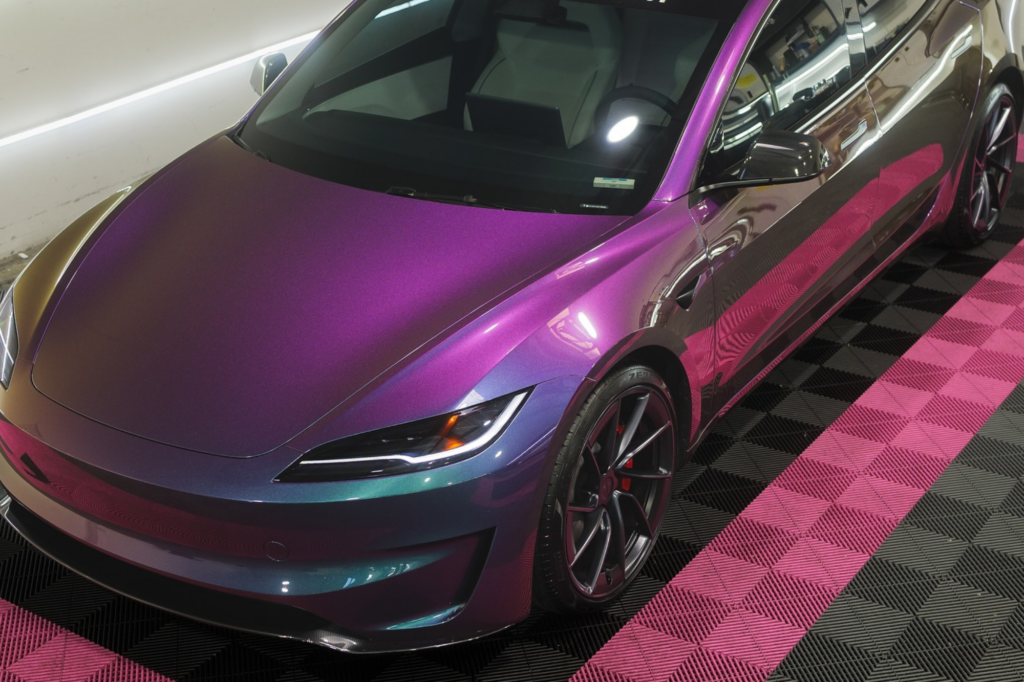Everyday driving exposes your car’s paint to a variety of damaging elements. Persistent UV rays can cause it to fade and oxidize, giving it a dull, chalky finish. Harmless-looking gravel might kick up and cause micro-abrasions. Remember those bird messes you didn’t wipe immediately? Their acidic nature can etch your car’s clear coat. Even wintry snow brings along corrosive salt that accelerates paint erosion. Ultimately, never underestimate the oxidizing effect of airborne pollutants that fade paint over time. Keeping on top of these factors will safeguard your car’s finish. If you’re curious about how to do that, there’s a wealth of useful tips just a few clicks away.
Key Takeaways
- Prolonged UV ray exposure can fade and oxidize your car’s paint, causing a dull, chalky finish.
- Loose gravel or road debris can create micro-abrasions and scratches on your car’s paint surfaces.
- Acidic bird droppings can severely damage car paint if not promptly and properly cleaned.
- Accumulated snow and salt can accelerate corrosion, potentially damaging both your car’s visual paintwork and underbody.
- Airborne pollutants can contribute to the oxidation of your car’s paint, leading to a dull and faded appearance.
The Hidden Toll of Sunlight
While you may treasure those sunny days for a leisurely drive, ongoing exposure to the sun’s harsh UV rays can damage your car’s paint.
Over time, these invisible powerhouses cause your car’s vibrant hue to fade and oxidize, leading to an unappealing and aged appearance.
Don’t be fooled; this isn’t superficial car paint damage—it’s an assault on the integrity of your car’s exterior.
Understanding how solar radiation impacts your car can give you the edge in maintaining its luster.
UV rays break down the chemical bonds in your paint over time, causing the finish to dull and chalk.
This degradation not only dulls the appearance but also reduces the paint’s ability to protect the underlying metal body.
Now that you’re clued in, let’s talk about reclaiming your car’s beauty.
Preserving your car’s color starts with a few key paint protection tips.
Invest in a high-quality protective wax or a specialized UV-resistant sealant; these form a protective shield against the sun’s ravages.
Regular applications of these products cannot only save your car’s paint but ultimately extend its life and maintain its value.
Gravel and Road Debris Impact
Just when you think you’ve sidestepped the sun’s damaging rays, another equally pernicious threat to your car’s paint comes into play: gravel and road debris.
These dangers are quite literally stone-cold, often slinging damage onto your car’s exterior without a second’s notice. Fundamentally, loose pebbles and debris thrown up by other vehicles can strike your vehicle, creating an array of micro-abrasions and paint scratches. High-speed highway driving or tailing construction vehicles elevate this risk considerably.
So, how do you shield your car from these tiny paint-eroding missiles? The answer is paint protection film (PPF). Its robust, clear design acts as a physical shield, reducing potential damage by absorbing and deflecting impact. PPF is a formidable defense that ensures your car’s paint enjoys a longer lifespan and keeps looking its best.
Maintenance is just as vital in protecting your car’s paintwork. Regular car washes help remove lingering road debris, prevent paint scratches, and stop them from escalating into more serious issues.
The Acidic Damage From Bird Droppings
Ever find yourself frustrated by bird droppings sullying your car’s paintwork? You’re not alone—it’s a common grievance among drivers.
Unknown to many, bird droppings are more than just an eyesore. They’re acidic and can wreak havoc on your car’s paint job.
When a bird relieves itself on your vehicle, it releases uric acid—a substance with a pH level between 3 and 4.5. From my perspective, this is nearly as acidic as vinegar.
When left unchecked, this acidity eats into your car’s clear coat, leaving unsightly etchings that mar its pristine finish.
Heat accelerates this damage. A car parked under the open sun becomes a hot surface, causing the bird droppings to harden and bind more closely with your paintwork. It makes it even harder to remove without causing additional damage.
To combat this, act promptly when bird droppings strike. Use a soft cloth and a gentle, pH-neutral car cleanser to remove the droppings and prevent them from adhering to and eating away at your car’s paint.

The Corrosive Effect of Snow and Salt
Bird droppings might be an unexpected source of paint damage, but it’s far from the only one. You’d probably never imagine that the snow and salt your car encounters in winter could also be sabotaging your paintwork.
Although harmless in itself, snow can lead to one of the biggest risks for your car’s paint—salt. Salt accelerates the corrosion process and, if left unchecked, can cause significant damage to your car’s appearance and underlying bodywork.
Additionally, the heat from your vehicle’s engine and exhaust can speed up this reaction. Salt can find its way underneath your car, leading to underbody rust, and it’s not just visible parts of your car that are threatened.
It’s essential to clean your car regularly during the winter months to minimize the damage, even if it seems futile, with a fresh layer of salt on the road every day. A high-pressure wash is supremely effective in getting salt off those hard-to-reach places.
Pollutants and Their Oxidizing Effects
While you might believe that your car only takes a beating from physical impacts, airborne pollutants also pose a considerable threat to your car’s pristine finish.
Whether it’s industrial pollutants, car emissions, or road dust, these contaminants wield oxidizing power that can quickly wear down your car’s paintwork.
Let’s explore the tech behind it. Your car’s paint is laid in layers: primer, color, and hard clear coat.
While this clear coat is designed to provide a barrier against harmful elements, chronic exposure to these relentless pollutants may gradually oxidize it.
That’s right, similar to rusting iron, oxidation can also occur on your auto’s surface.
So, how does this oxidation look? Have you spotted a dull, faded complexion on your car’s paint where it once shone vibrant?
That’s oxidation damage, my friend. It doesn’t stop there, either.
If left unattended, this dullness can escalate into a cloudy, rough surface that stands miles away from your car’s initial gleam.
Worse, oxidation exposes underlying layers to further damage.
The conclusion is that continuous bombardment by pollutants considerably reduces the lifespan and look of your car’s paint.
Ways to Protect Your Car's Paint
Although maintaining a shiny car might seem like a Herculean task amidst constant exposure to pollutants and the elements, there are several effective strategies you can employ to protect your car’s paint.
First, consider using protective coatings like wax, sealants, or the increasingly popular ceramic coatings. These add an extra layer of defense against environmental hazards and chemical damage. For superlative protection, look into Paint Protection Film (PPF). Acting as a physical barrier, it’s like armor for your paintwork, shielding it from scratches and chips.
Implement safe driving practices. Stay a safe distance from large trucks and construction vehicles that could kick up damaging debris. Also, if you can, avoid puddles and muddy terrain to keep your car from harmful splashback.
Render regular maintenance to your ride. Always use paint-safe cleaning products and soft microfiber cloths for washing. Swiftly remove bird droppings, sap, or other contaminants before they have a chance to etch into your paint.
Consistently schedule detailing sessions to restore and protect your car’s finish. Keeping up with a regular maintenance routine guarantees you’ll nip any early signs of damage in the bud.
In Summary
So, there you have it. Keeping your car’s paint job pristine isn’t as simple as avoiding scratches. Sunlight, road debris, bird droppings, and winter salt all look to dull your shine. But don’t worry—knowledge is power! At Vaia Design Ceramic Pro Riverside, we provide industry-leading paint protection solutions to safeguard your car against these everyday threats. Now that you’re aware of how these everyday nuisances impact your car’s paint, you can take the necessary steps to guard against them, keeping your ride looking fresh, preserving its value, and handling the road with allure. Happy driving!

